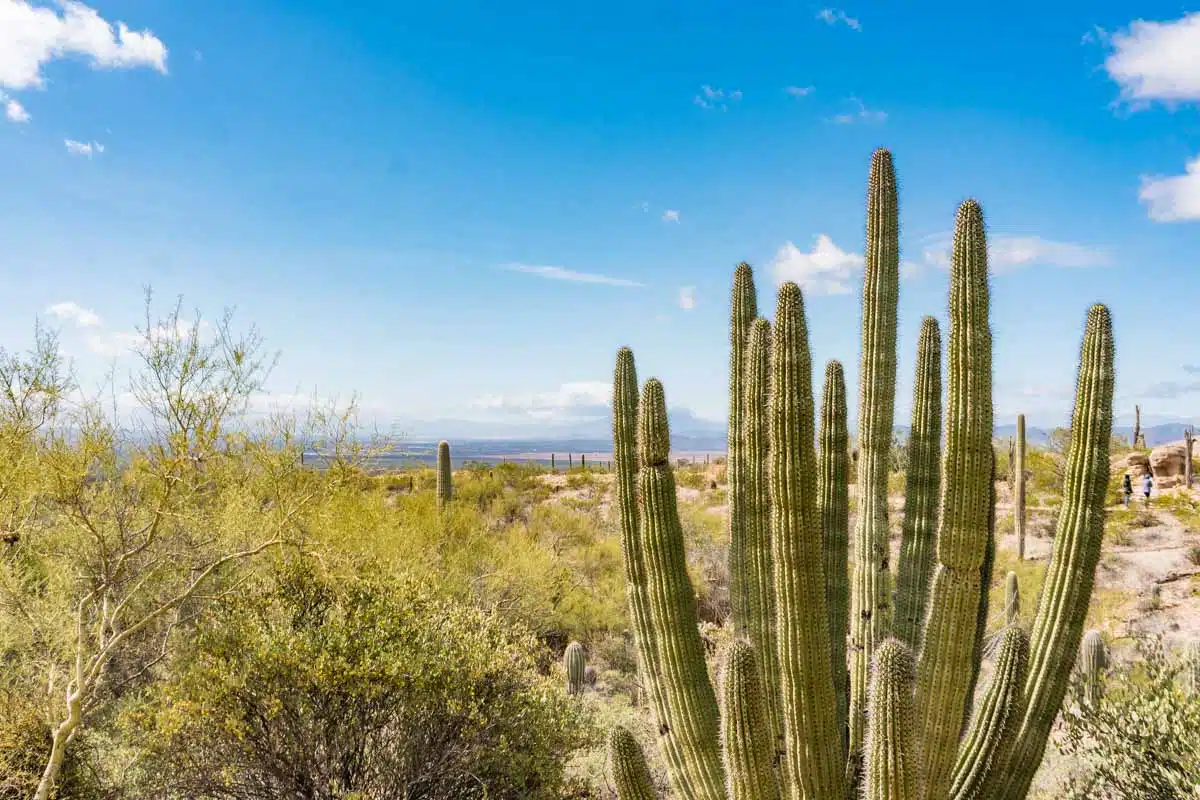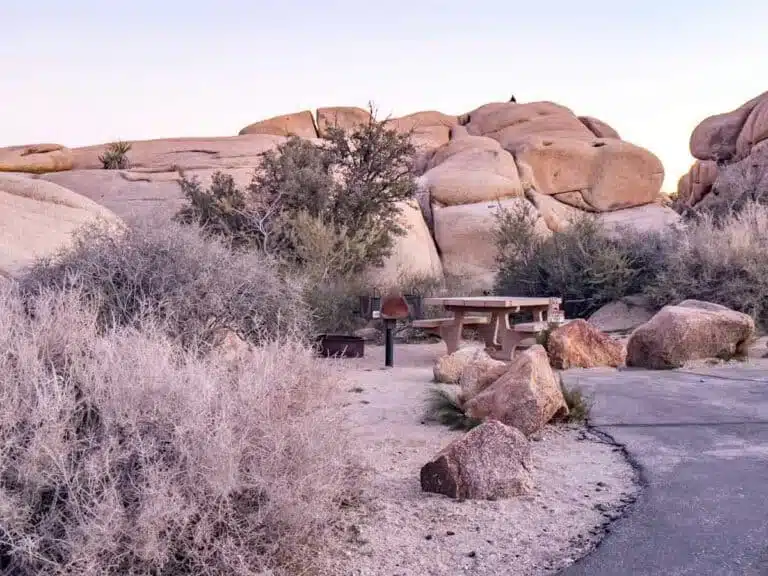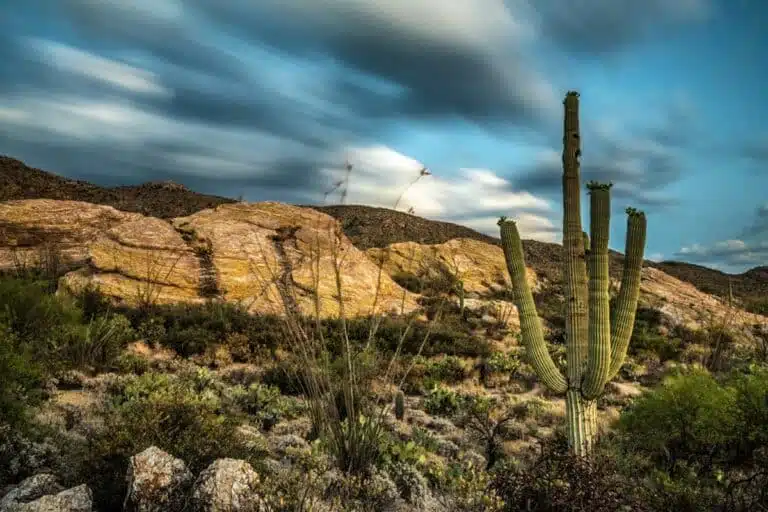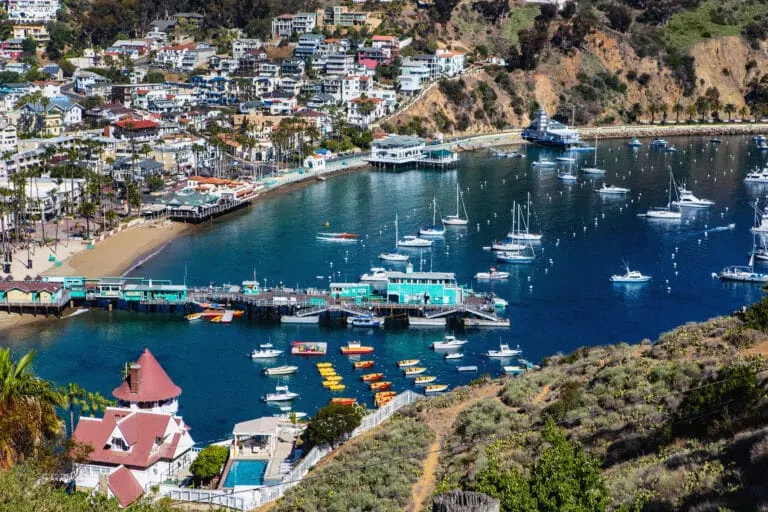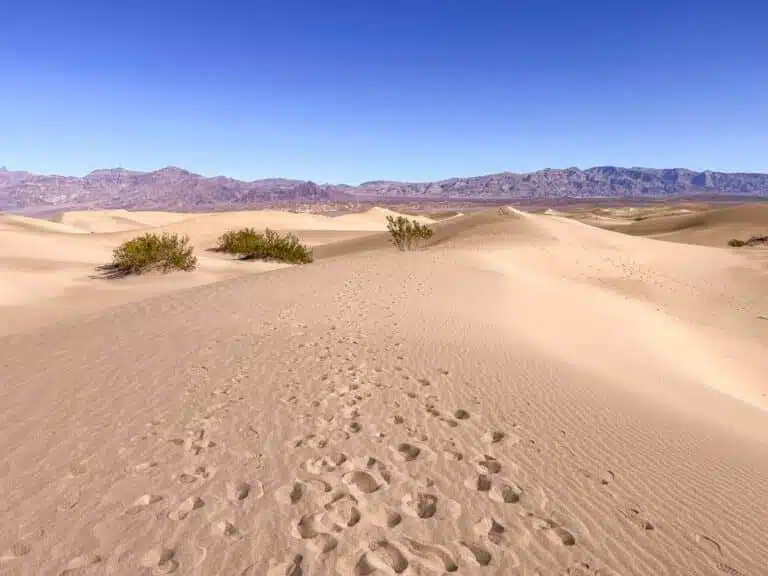Dreaming of an Arizona getaway but struggling to choose the perfect time to make it happen? Worry not; I’m here to provide savvy suggestions and insider tips as to when to visit Arizona.
I’m not surprised you’re planning a trip to Arizona – The Grand Canyon State has everything from snow-covered canyons to desert landscapes.
But, while it’s generally a year-round destination, it’s safe to say that some times of the year may be better than others, depending on your interests.
Whether you want to hike in cooler climes, tackle AZ’s best snow slopes or even snap photos of wildflowers in full bloom, read on to discover when you should visit Arizona.
When is the Best Time to Visit Arizona?: At A Glance
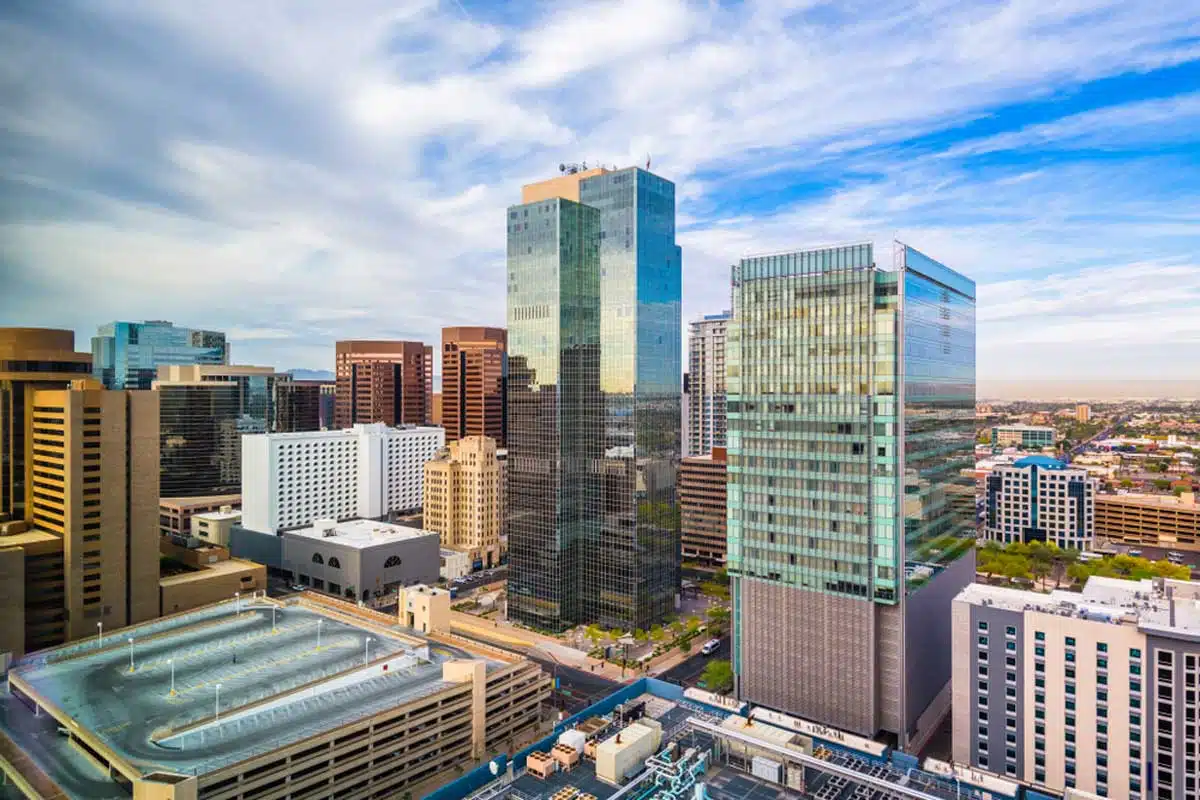
As you’re going to see throughout this article, there isn’t a one-size-fits-all approach to visiting Arizona.
That said, the best times to visit Arizona are spring (March to May) and fall (September to November). This is when you’ll experience the best weather in Arizona for outdoor fun – without the scorching summer heat or the bitter cold of winter.
The Best Time To Visit Arizona
What Is the Best Month To Visit Arizona?
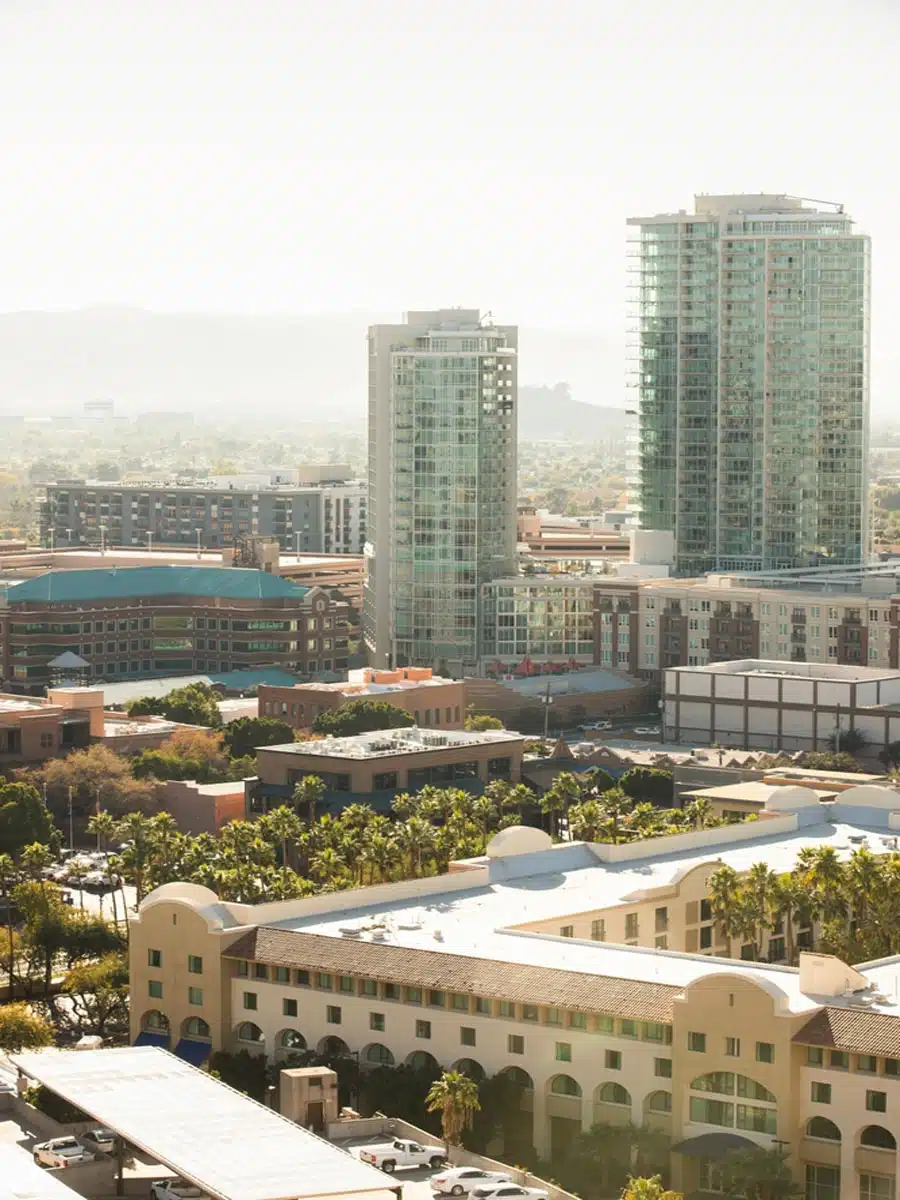
Here is a breakdown of the best time of year to visit Arizona’s different regions:
For mild temperatures and low chances of rain, visit Phoenix and Central Arizona from November to April.
The Northern region, including Flagstaff, Sedona and the Grand Canyon, is best visited in the shoulder seasons – spring and fall – for its pleasant weather.
For Southern Arizona, including Tucson, the best time is from October to April when temperatures are mild, and rainfall is minimal.
Eastern Arizona, which includes the White Mountains, is ideal for outdoor activities from June to September, but summer thunderstorms can be expected.
When is High Season in Arizona?
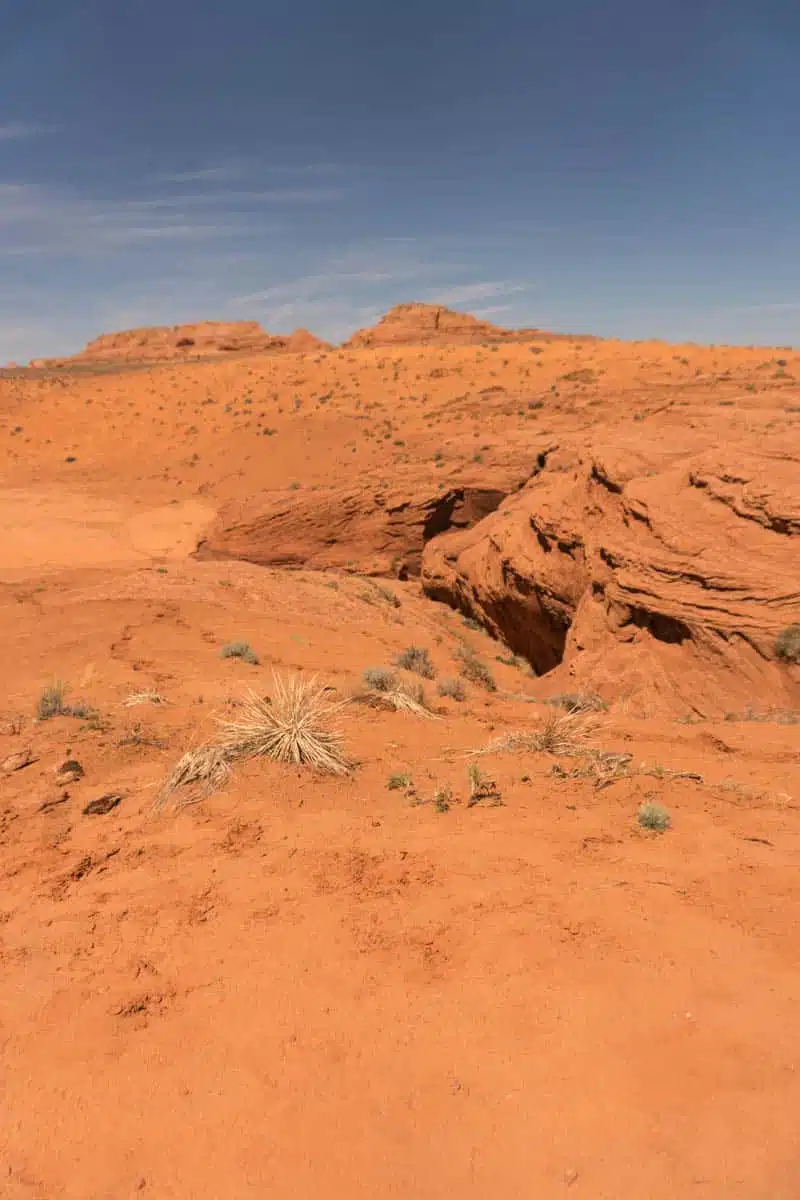
The high season runs from October to April. You can expect mild weather perfect for exploring the outdoors. Remember that this season also sees the highest influx of visitors.
Best Time To See the Grand Canyon
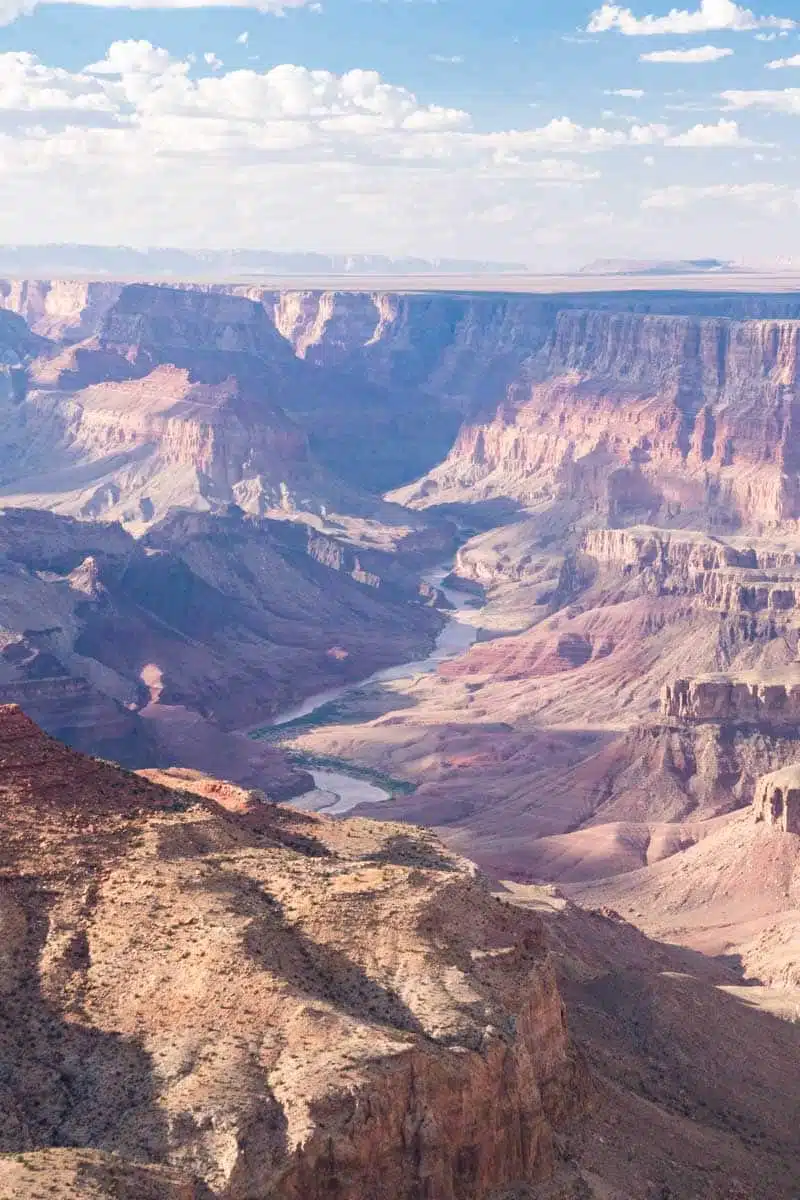
One of the main reasons that people head to Arizona is to visit the Grand Canyon. But when is the best time? I’ll tell you – it’s between March and May to avoid the heat and crowds.
You will also save on your travel budget with cheaper flights and hotel rates if you travel in spring and fall rather than in the peak summer months.
Best Time To See Arizona’s Wildflowers
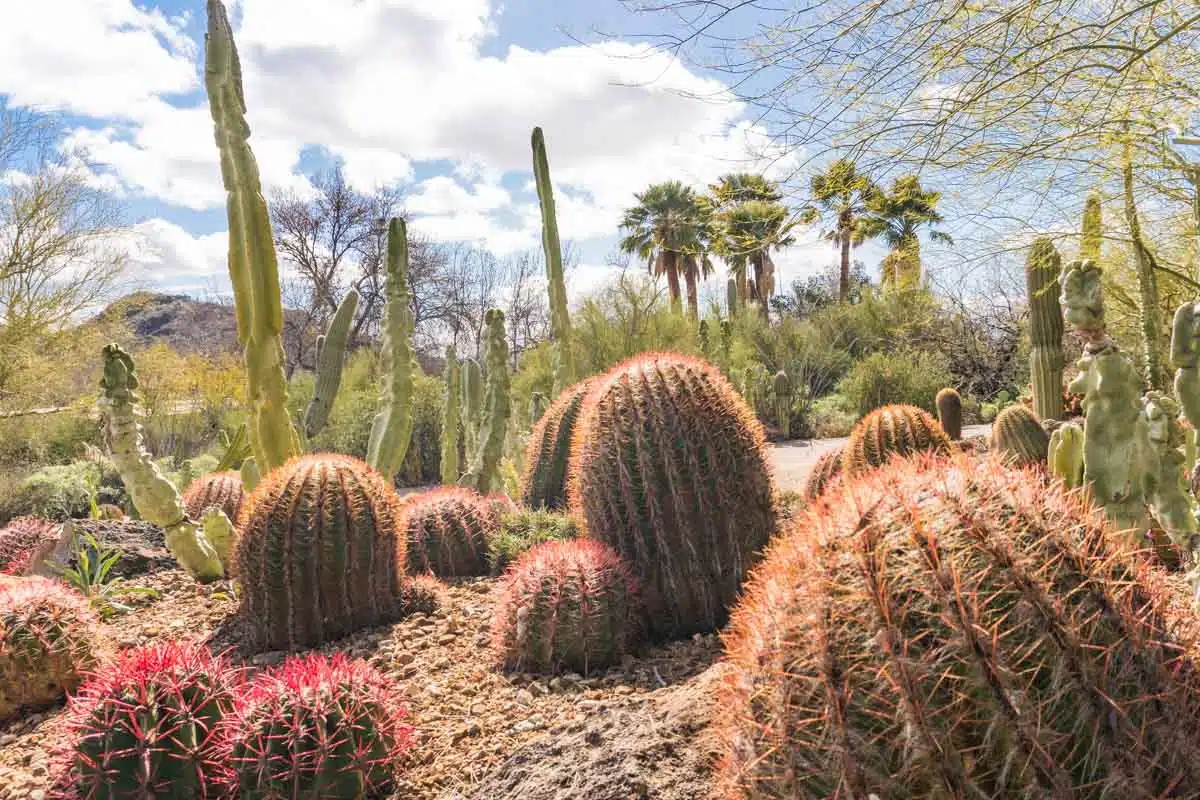
Fancy seeing the state decked out in a blanket of blooms? I thought so. Then you’ll want to plan your trip for April.
This is the prime time for viewing the stunning wildflowers across Arizona, with their vibrant colours adding a touch of magic to the desert landscape.
Best Time To See Snow
You might think of Arizona as a blazingly hot state (and, for the most part, it is) but that’s not always the case. January in Arizona brings snow-covered peaks and slopes that offer thrilling snow sports, including skiing, snowboarding and snowshoeing.
Arizona by Season
The best time to go to Arizona ultimately depends on your interests and what you want to experience during your trip. So, let’s look at what each season has in store.
Spring in Arizona
March – May
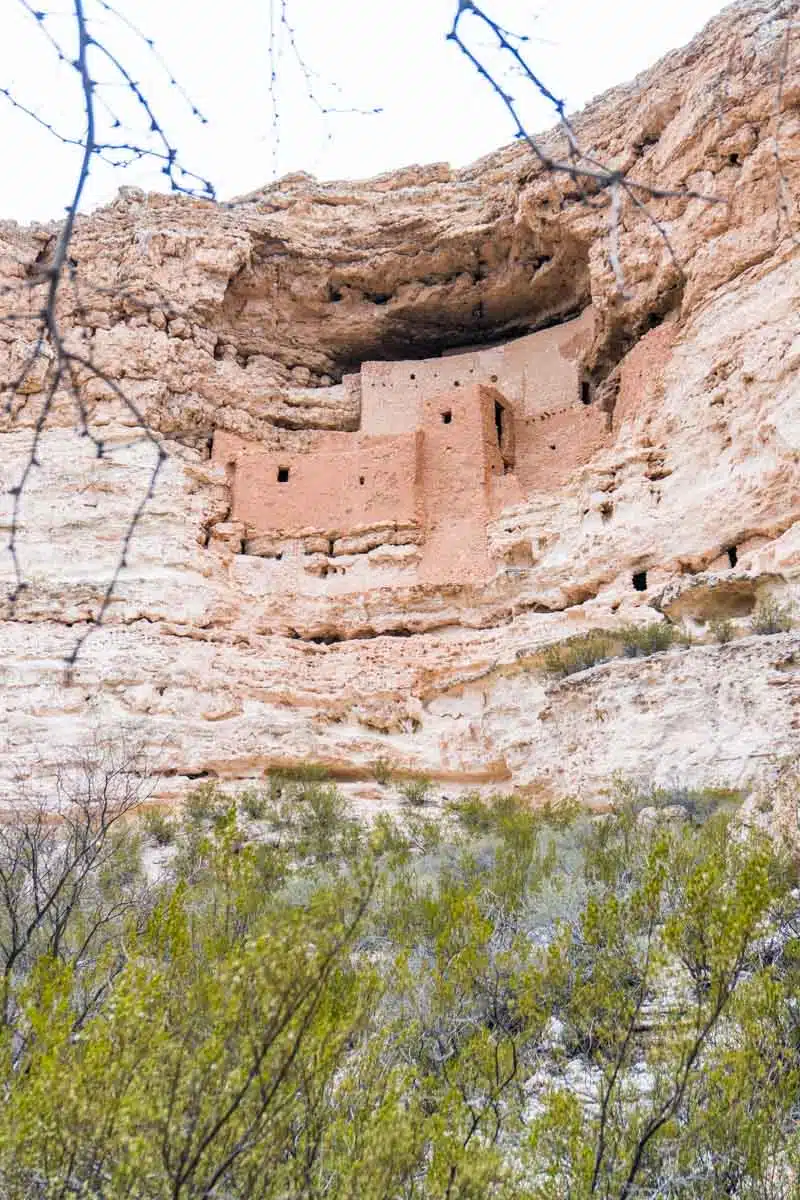
With mild and comfortable temperatures, spring is the best time to visit Arizona’s national parks. Just be aware that spring can also bring unpredictable weather, including occasional rain showers and windy days, so be sure to pack accordingly.
Key Events and Things to Do in Arizona in Spring
Tucson Festival of Books: This festival in March brings together authors, publishers and book enthusiasts for panel discussions, workshops and book signings.
Desert Botanical Garden: Explore the Sonoran Desert at the Desert Botanical Garden in Phoenix, which features over 50,000 plants and blooming cacti.
Pros of Travelling to Arizona in Spring
- In spring, the days start getting longer, giving you more time to explore all the unmissable things to do in Arizona.
- Visiting early in the season can also lower your risk of encountering wildfires, which are more common in the summer months.
Cons of Travelling to Arizona in Spring
- Spring break can make popular destinations more crowded than usual.
- Occasional rain showers may interrupt outdoor plans.
Summer in Arizona
June – August
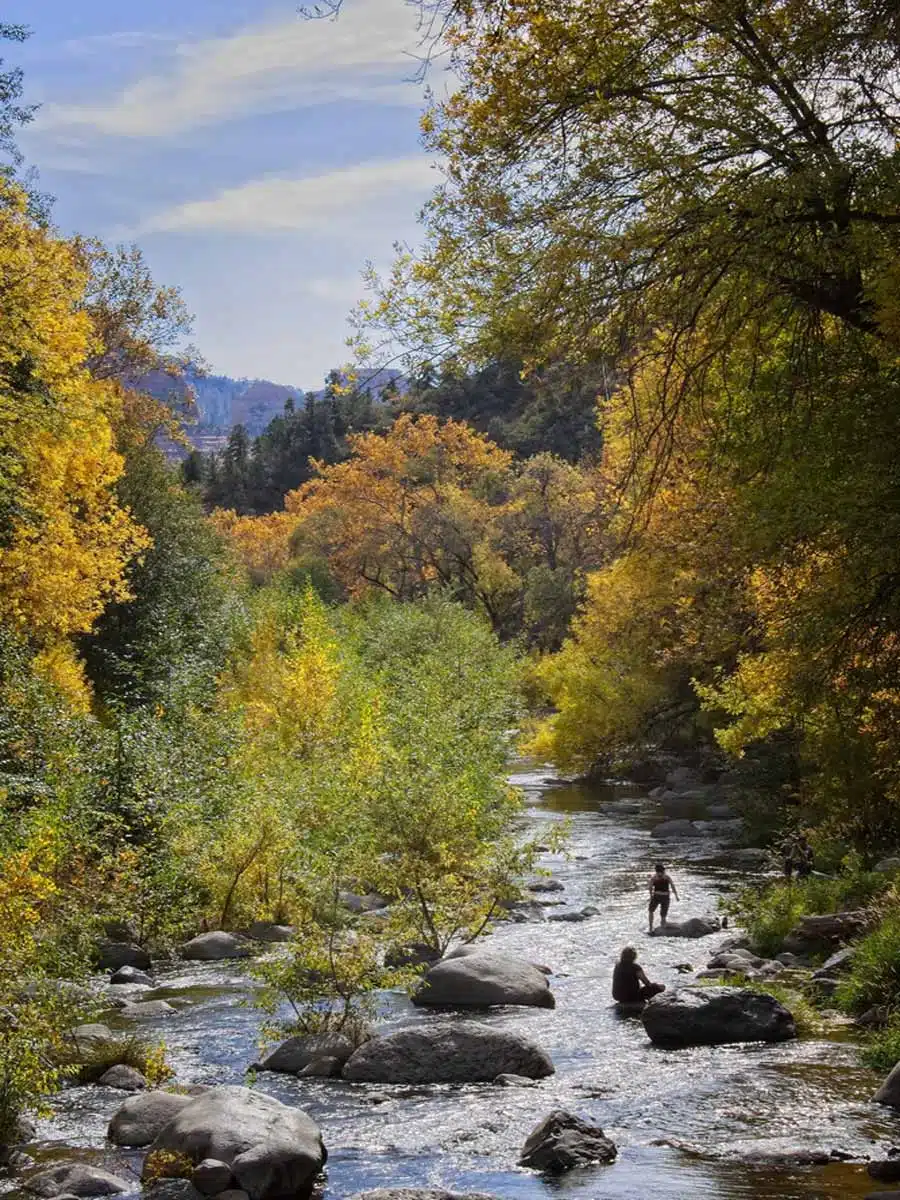
Summer in Arizona may be hot and dry, but don’t let that stop you from exploring everything the state offers. With high temperatures often reaching triple digits, it’s essential to plan accordingly and stay hydrated.
Key Events and Things to Do in Arizona in Summer
Music festivals: Enjoy live music at events like the Tucson Jazz Festival and Flagstaff Blues and Brews Festival.
Independence Day celebrations: Join the festive celebrations in Phoenix, Flagstaff, or Tucson with spectacular fireworks displays and parades.
Cultural events: Experience Arizona’s diverse culture at the Arizona Asian Festival and the Navajo Festival of Arts and Culture.
Pros of Travelling to Arizona in Summer
- Summer is the off-season, so you’ll find fewer crowds and shorter lines at popular attractions.
- You can often find better deals on flights and accommodations during this time.
Cons to Travelling to Arizona in Summer
- The extreme heat is the biggest downside to summer in Arizona.
- The monsoon season also brings high humidity, making the heat feel even more intense. This also leads to increased insects and wildlife, including mosquitoes and scorpions.
Fall in Arizona
September – November
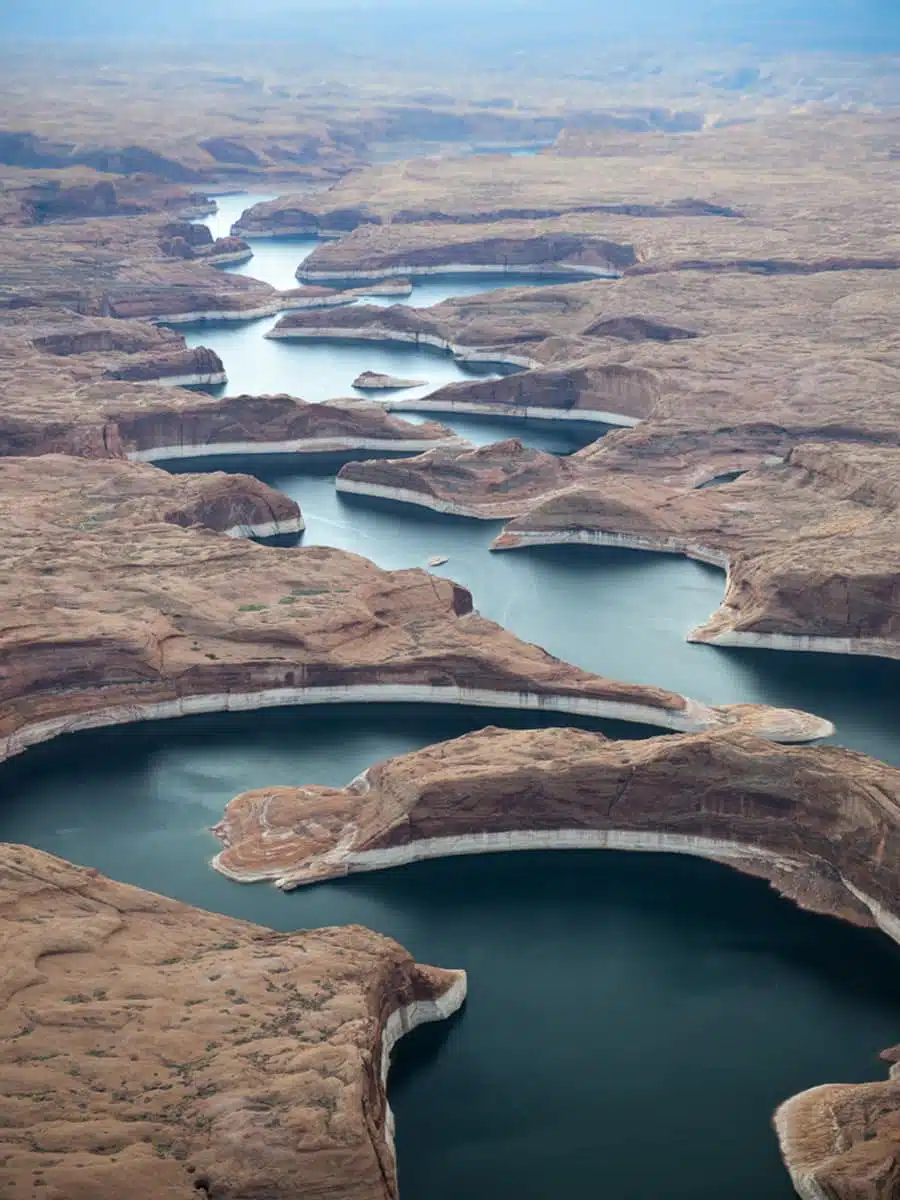
Fall in Arizona is a magical season allowing you to enjoy the great outdoors without a sweat. With the average temperatures ranging between 12 and 23 degrees, you can expect clear blue skies and crisp, refreshing air.
Key Events and Things to Do in Autumn in Arizona
Arizona State Fair: This fun event offers amusement rides, games, live music and diverse food vendors.
Sedona Arts Festival: This two-day festival showcases the work of over 100 artists working in ceramics, jewellery, painting and sculpture.
Harvest Season: Harvest season for the wine industry in Arizona takes place in autumn, providing an excellent opportunity to tour wineries and sample local wines.
Pros of Travelling to Arizona in the Fall
- One of the main draws of fall is the milder weather.
- The cooler temperatures also make it the perfect time to spot some of Arizona’s animals in their natural habitats.
Cons of Travelling to Arizona in the Fall
- Fall is a popular season for festivals and events in Arizona, which can lead to increased traffic and crowds on the roads and at popular attractions.
Winter in Arizona
December – February
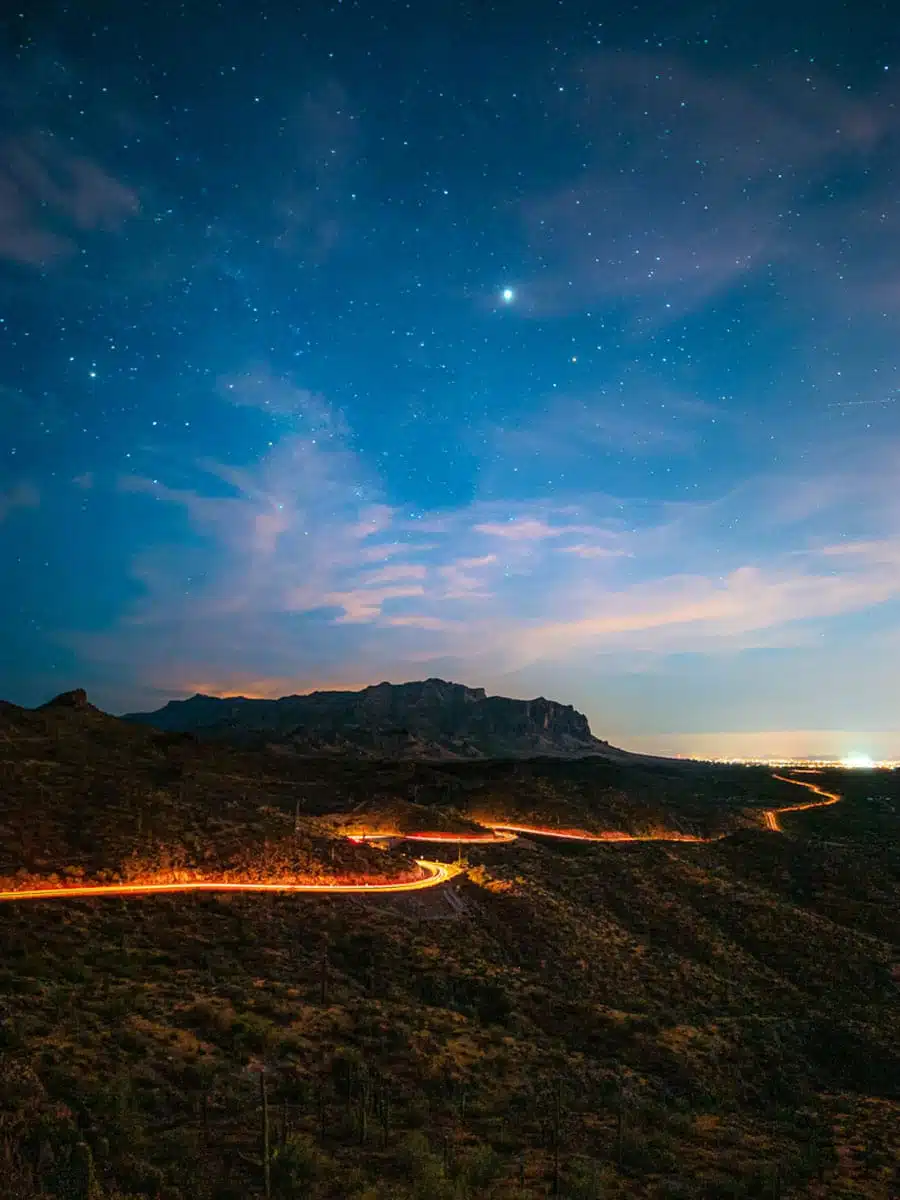
If you want to escape the freezing weather in other states, winter in Arizona is perfect for you. With temperatures between 6 and 21 degrees, you won’t shiver in your boots like in other parts of the country.
And if you’re looking to hit the slopes or explore nature, warmer areas like Phoenix and Tucson still offer plenty of opportunities for outdoor activities.
Key Events and Things to Do in Arizona in Winter
Visit the Grand Canyon: Visit the Grand Canyon to enjoy breathtaking views of the snow-capped marvel with smaller crowds.
Tucson Gem and Mineral Show: The world’s largest gem and mineral show occurs annually in February.
See the ZooLights: Phoenix Zoo’s holiday light display features millions of lights and festive activities.
Pros of Travelling to Arizona in Winter
- Flights, accommodation and activities may be more affordable during the off-season, allowing you to stretch your travel budget further.
Cons of Travelling to Arizona in Winter
- Even though winter is an off-peak season, there may still be crowds at popular destinations and accommodations.
- Winter weather hazards like icy roads and occasional storms can also pose a challenge during your visit.
Best Time To Travel to Arizona: Practical Tips + Tricks
- Remember to pack your layers, sunscreen and a water bottle to stay hydrated in the hot desert climate. Stay safe, friends.
- Booking your accommodations and activities in advance is always a good idea to avoid any last-minute headaches.
- When exploring the state’s rich history and diverse population, it’s essential to respect local customs and traditions.

